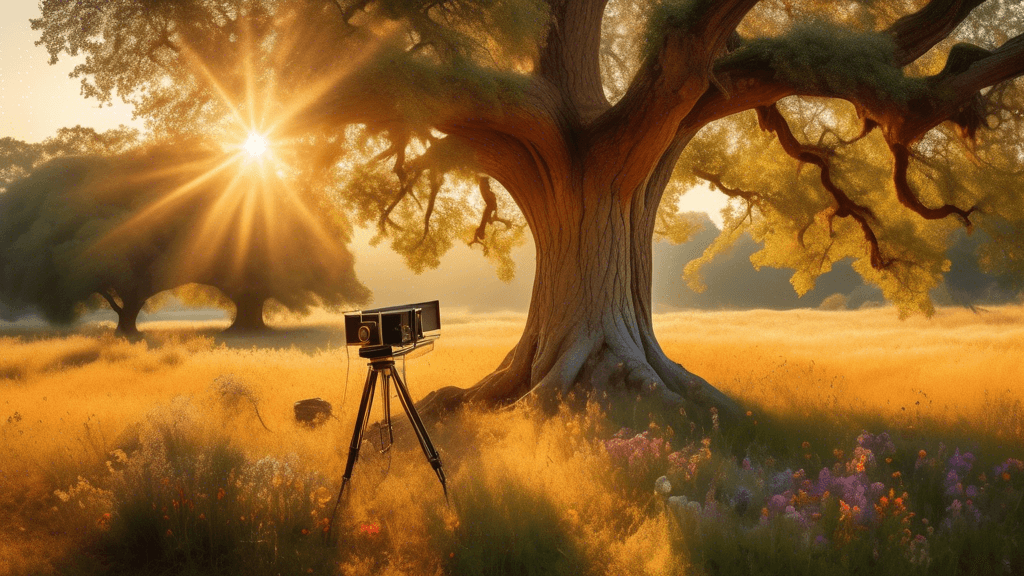
Mastering Natural Light in Photography: Techniques and Tips
Share
Understanding Natural Light in Photography
Have you ever noticed how a photograph can feel warm and inviting simply because of how the light embraces the subject? Natural light in photography isn't just about brightness and shadows; it's the art of using the sun's light to enhance and transform your photos. But how does one master this elusive art and use it to its fullest potential?
What is Natural Light and Why is it Important?
Natural light, often referred to as daylight, is the light produced by the sun. It differs from artificial light sources like lamps and ceiling lights, which photographers also use. The significance of natural light in photography cannot be overstated—it does not cost anything, often enhances atmospheric conditions, and most importantly, can dramatically affect the mood and feel of a photograph.
Techniques to Harness the Power of Natural Light
Understanding the Golden Hour
One of the first terms you'll encounter in natural light photography is golden hour, referred to the time shortly after sunrise or before sunset. Why is this time so magical?
- The light is softer and warmer, casting long, gentle shadows.
- It creates a golden tone that is universally flattering for landscapes, portraits, and nature photography.
- It reduces the likelihood of overexposure and harsh shadows that are often a problem during the midday sun.
Utilizing Diffused Light
Cloudy days might seem like a photographer’s nightmare, but they are actually perfect for producing diffused light. This softer, more even light can reduce shadows and decrease contrast in your photos. It's particularly beneficial for portrait photography because it softens skin tones and minimizes blemishes.
The Role of Weather and Time
Weather conditions can dramatically alter the kind of natural light available. Overcast skies can provide a soft, diffused light, while a clear sky at midday might offer bright, harsh light. Both sunrise and sunset provide dramatically different lighting conditions that need specific settings on your camera to capture them effectively.
Practical Tips for Mastering Natural Light
Adjust Your Camera Settings
It's crucial to adjust your camera settings according to the lighting conditions. A few adjustments include:
- ISO setting: Lower for bright conditions, higher for darker settings.
- Aperture: A wider aperture (lower f-number) allows more light in and is ideal for lower light conditions.
- Shutter Speed: Slow shutter speeds let more light into the camera but can cause blurring if subjects move quickly.
Experiment with Shadows
Shadows can be a photographer's friend or foe. It's all about perspective. Using shadows creatively can add mood, depth, and drama to your photographs. Experiment with the direction and length of shadows during different times of the day to see how they alter the composition and tone of your images.
Reflectors and Diffusers
Sometimes, natural light needs a little help. Reflectors can bounce light into the shadows, illuminating parts of the subject that would otherwise be underexposed. Diffusers can soften harsh sunlight, particularly useful in portrait photography during the sunny parts of the day.
Conclusion: Practice and Patience
Mastering natural light in photography is a blend of art and technical skills, and like any art, it takes time and practice to perfect. Start with understanding the light available to you, and use these techniques and tips to explore all that natural lighting can offer. Go out during different times of the day, in various weather conditions, and experiment with camera settings, angles, and composition to see how the light affects your shots.
Remember, the best camera is the one you have with you; it's not about having the perfect conditions but making the most of what you have. As Steve McCurry, a renowned photojournalist, once said, The essence of photography is capturing light. It’s the light that moves us.
Ready to Capture the Light?
Whether you're a seasoned photographer or someone just starting out, take your camera and step outside. Observe how the light moves and changes the world around you. Capture it in a way that tells a story, your story. Let the natural light not only illuminate your subject but also inspire your creativity. Happy shooting!





